Chronic Pain
What is a Chronic Pain?
Chronic pain refers to persistent pain that lasts for weeks, months, or even years, beyond the typical healing time for an injury or illness. The pain may never go away or it may only occasionally occur. It could occur in any place in your body.
Chronic pain can make it difficult for you to do daily tasks like working, socializing, and taking care of other people or yourself. It can exacerbate your pain by contributing to feelings of worry, sadness, and insomnia. This response sets off a difficult-to-break cycle that never ends.
Acute and chronic pain are two different categories of pain. When you are injured, such as by a small cut on your skin or a broken bone, you experience acute pain. The pain subsides quickly once your body recovers from whatever caused it. Chronic pain, on the other hand, lasts long after a disease or injury has healed. It even occurs occasionally for no apparent reason.
Chronic pain can present itself in many different ways all across your body. Typical forms of long-term pain include:
- Joint pain, or arthritis.
- Pain in the back region.
- pain in the neck.
- Cancer pain close to a tumor.
- migraines as well as other headaches.
- pain in the testicles (orchialgia).
- pain that persists in scar tissue.
- muscular ache throughout the body (similar to fibromyalgia).
- Neurogenic pain can be brought on by injury to the nerves or other parts of the nervous system.
One of the most common reasons individuals see a doctor is chronic discomfort. In the US, around 25% of adults report having chronic pain.
What is Pain?
Pain originates in the body’s organs and in the receptor nerve cells that are located beneath the skin. These receptor cells communicate with the spinal cord, which transmits the message to the brain when you are ill, hurt, or experiencing any other kind of issue. Before reaching the brain, painkillers lessen or stop these signals.
Pain can range from a minor annoyance, like a slight headache, to a severe and urgent condition, like kidney stone pain or the chest pain that follows a heart attack. Acute pain is the newest type; subacute pain lasts for a few weeks or months; and chronic pain lasts for more than three months.
In the US, one of the most expensive health issues is chronic pain. The financial effects of chronic pain can include higher medical costs, lost wages, decreased productivity, compensation payments, and legal fees. Think about the following:
- One of the most important health issues is low back pain. Adults who suffer from back discomfort sometimes find that their activities are limited.
- Most cancer patients who have advanced disease experience pain.
- Every year, over 50 million Americans experience pain from arthritis.
- Millions of adults in the US suffer from headaches. Migraines, cluster headaches, and tension headaches are among the most prevalent forms of chronic headaches.
- The total number of reported cases is increased by other pain disorders, such as neuropathies and neuralgias that affect nerves throughout the body, pain resulting from damage to the central nervous system (the brain and spinal cord), and pain that has no known physical cause, or psychogenic pain.
What are the various forms of pain?
There are the following two categories of pain:
- Acute pain: Inflammation, tissue damage, trauma, disease, or recent surgery can all be the causes of this pain. Usually, it doesn’t last more than a week or two. Once the underlying cause is addressed or treated, the pain usually goes away.
- Chronic pain: that hurts for several months or even a few years.
What is Chronic pain?
Any pain that persists for three months or more is considered chronic. This kind of pain can be brought on by a wide range of medical conditions, but being older than 65 or assigned female at birth can make you more susceptible to chronic pain. Twenty percent or so of adult Americans suffer from chronic pain, and over seven percent experience “high impact” chronic pain—pain that interferes with daily activities, employment, or education.
Everybody has a slightly different experience with chronic pain. The area of your body that is impacted and the underlying cause of your pain will probably determine your symptoms. If you don’t get treatment for your pain, you might have trouble going about your everyday business and seeing changes in your mental state. Thankfully, some therapies can provide you with some relief. However, the specifics of your treatment plan will be determined by your unique symptoms and general health.
Types of Chronic Pain
The majority of individuals with persistent pain report having multiple types of pain. For instance, fibromyalgia may coexist with chronic back pain in a patient. Significantly high percentages of people have symptoms of both GAD and severe depressive illness. More than 67% of individuals with persistent pain also experience co-occurring mental health issues.
Pain can be classified into many different kinds, such as neuropathic, nociceptive, inflammatory, musculoskeletal, mechanical, psychogenic, and inflammatory.
Neuropathic: Occurs when there is irritation or damage to the nerves, frequently as a result of complications from diabetes
Nociceptive: Produces pain that is aching, burning, or sharp when tissue is damaged as a result of an injury, surgery, or dental work.
Musculoskeletal: This may appear in any part of the body’s ligaments, tendons, muscles, joints, or bones.
Inflammatory: Refers to the state in which your body’s immune system reacts to an injury or infection.
Psychogenic pain: Psychogenic pain is defined as pain resulting from psychological conditions, such as physical manifestations of anxiety or depression.
Mechanical: Manifests as physical pressure on joints, vertebrae, or surrounding tissues
What is the root cause of chronic pain?
A back sprain or pulled muscle is an example of an initial injury that typically results in chronic pain. It is thought that damage to the nerves causes the development of chronic pain. Pain is more severe and persistent due to nerve damage. In these situations, the chronic pain might not go away with treating the underlying injury.
On the other hand, chronic pain can sometimes occur in people who have never been injured. It’s unclear exactly what causes chronic pain in the absence of trauma. There are times when an underlying medical condition, like the following, causes the pain:
- Extreme fatigue syndrome: characterized by intense, long-lasting tiredness often accompanied by discomfort
- Endometriosis: a painful disorder where tissue that resembles the lining of the uterus grows outside of it
- Fibromyalgia: widespread pain affecting bones and muscles
- Inflammatory bowel disease: a group of disorders causing persistent, painful inflammation in the digestive system.
- Interstitial cystitis: a persistent disorder characterized by bladder pain and pressure
- Temporomandibular joint dysfunction (TMJ): a condition leading to painful jaw clicking, popping, or locking
- Vulvodynia: chronic pain in the vulva without an apparent cause
Who is susceptible to Chronic pain?
All ages can be affected by chronic pain, but older adults are most likely to experience it. In addition to age, the following other factors may raise your chance of experiencing chronic pain:
- obese or overweight
- being hurt
- undergoing surgery
- being a woman
What does the “terrible triad” mean?
You run the risk of being caught in a vicious cycle when your pain gets so bad that it gets in the way of your daily activities and career. Being in pain can make you agitated, depressed, and fixated on it. Insomnia and fatigue are frequently brought on by depression and irritability, which in turn causes increased irritability, pain, and depression.
We refer to this condition as the “terrible triad”—struggle, insomnia, and depression. Some people may become drug-dependent due to their need to end their pain, while others may resort to dubious treatments or need recurrent surgeries. Frequently, the family is just as affected by the situation as the person who is in pain.
Symptoms of Chronic Pain
The symptoms of continual pain can vary depending on the type of pain you experience and its root cause. It may manifest as localized pain in specific areas of your body or gradually spread to larger regions. Persistent pain typically affects the back, head, neck, arms, legs, or joints, such as the knees or wrists.
The discomfort associated with chronic pain can include various sensations like sharp or stabbing pain, dull aches, throbbing, tingling, burning, stiffness, shooting pains, or soreness.
Diagnosing Chronic Pain
Chronic pain diagnosis involves identifying pain that persists for more than three months, whether continuously or intermittently. Since pain is personal and subjective, healthcare providers face challenges in determining its root cause without input from the individual experiencing it.
When seeking help for prolonged pain, share the following details with your healthcare provider:
- Location of the pain
- Degree of intensity on a 0–10 scale
- Frequency of occurrence
- Impact on daily life and work
- Triggers that worsen or alleviate the pain
- Level of stress or anxiety
- Medical history including past illnesses and surgeries
Various tests are used in the diagnosis process, including:
- Blood tests
- Electromyography for muscle activity assessment
- Imaging tests like X-rays and MRI scans
- Nerve conduction studies for nerve function evaluation
- Reflex and balance assessments
- Spinal fluid analysis
- Urine tests
By undergoing these tests and providing detailed information, individuals can work with their healthcare providers to better understand and manage chronic pain.
Differential Diagnosis
As a symptom, pain is not a diagnosis. Creating a list of potential causes for a patient’s prolonged pain involves examining the underlying reasons for their discomfort. It is crucial to identify the specific injuries or diseases at the root of the pain to provide effective treatment. For example, distinguishing between peripheral and central neuropathic pain in a patient is vital.
Similarly, while dealing with severe knee pain, it’s important to determine whether the reason is severe osteoarthritis in order to choose the best course of action—a knee replacement or an injection. Conversely, if the knee pain is due to conditions like rheumatoid arthritis, infection, gout, pseudogout, or meniscal injury, the treatments needed would differ significantly.
In the case of chronic generalized pain, possibilities include patients experiencing allodynia due to prolonged opioid use, or individuals dealing with major depressive disorder, psychiatric disorders, or sleep disorders like insomnia. In addition, in situations of extensive, generalized chronic pain, autoimmune diseases like psoriatic arthritis or lupus, fibromyalgia, and central pain syndromes should be taken into consideration.
The primary categories of pain include neuropathic, musculoskeletal, mechanical, and inflammatory types. Painful disorders that are ignored and left untreated might eventually turn into chronic pain. Because chronic pain is persistent and alters the body’s neurochemistry, it frequently points to one or more disorders and can even develop into a separate condition. It’s essential to treat acute and subacute pain as soon as possible to stop chronic pain from developing.
Prognosis
Our current treatments for persistent pain may lead to around a 30% drop in a patient’s pain ratings. This decrease can have a meaningful impact on a patient’s ability to function and their overall quality of life. Unfortunately, in the long term, individuals with persistent pain often experience lower functioning levels and a reduced quality of life.
However, there is hope for improvement in patients dealing with persistent pain when treating accompanying psychiatric conditions. Persistent pain not only heightens the chances of illness and obesity but also elevates the risk of suicide compared to the general population.
Approximately half of patients undergoing spinal cord stimulation do not experience sufficient pain relief, with 20 to 40% potentially developing tolerance. Moreover, the effectiveness of this stimulation tends to decrease over time. Similarly, individuals who develop persistent pain and rely on opioids tend to develop a tolerance which, as the dose increases, can raise the risk of morbidity and mortality.
In the realm of persistent pain management, prevention holds significant importance. By appropriately addressing acute and subacute pain, the onset of persistent pain can potentially be averted, thus limiting its impact on an individual’s quality of life.
Treatment
How is chronic pain managed?
In the treatment of chronic pain, healthcare providers initially aim to identify and address the underlying cause. However, in cases where the source cannot be pinpointed, the focus shifts to managing the pain.
Healthcare providers employ various methods to address chronic pain, taking into account factors such as the specific type of pain experienced, any known causes, age, and overall health. Effective treatment plans incorporate a mix of strategies, encompassing medications, lifestyle adjustments, and therapies.
It is crucial for individuals experiencing chronic pain alongside depression and/or anxiety to seek treatment for their mental health conditions. Such psychological factors can exacerbate chronic pain. For instance, depression symptoms like fatigue, altered sleep patterns, and reduced activity levels can intensify chronic pain.
Treatment plan for Chronic pain
The specific treatment plan for chronic pain will vary depending on the root cause of the pain. Similarly, the treatment objectives will be tailored to the exact condition present. While some people seek to completely eradicate their pain, others concentrate on treating their pain and minimizing its effects on day-to-day functioning. Various interventions, including medications and therapies, may be beneficial to you
Medications
Your healthcare provider might recommend medications from the following categories to help alleviate pain symptoms:
- Non-steroidal anti-inflammatory drugs (NSAIDs) like Motrin (ibuprofen) or Aleve (naproxen) for pain and swelling
- Opioids such as Ultram (tramadol) and Vicodin (hydrocodone) for severe short-term pain relief
- Anticonvulsants like Horizant (gabapentin) or Lyrica (pregabalin) are traditionally used for seizures but are effective in managing chronic pain
- Antidepressants like Elavil (amitriptyline) or Effexor (venlafaxine) to address emotional aspects of chronic pain
- Topical analgesics like Voltaren (diclofenac) or Lidoderm (lidocaine) for direct application on inflamed skin
- Muscle relaxers such as Soma (carisoprodol) or Fexmid (Flexeril) to alleviate muscle pain or spasms
- Anti-anxiety medications like Xanax (alprazolam) or Klonopin (clonazepam) to help with anxiety related to chronic pain
Transcutaneous Nerve Stimulation (TENS)
In cases of severe or medication-resistant chronic pain, your provider might suggest transcutaneous nerve stimulation (TENS). This treatment involves using a device to send electrical signals through the skin to areas experiencing pain, with studies indicating potential pain reduction benefits.
Injections
For chronic back or joint pain, nerve block injections or epidural steroid injections may provide relief. Nerve block injections involve administering an anesthetic near the affected area, while epidural injections can reduce inflammation by injecting corticosteroids around affected joints or the back.
Physical or Occupational Therapy
Physical therapy and occupational therapy can be effective when combined with other treatments or medications. These therapies can help improve strength, mobility, and flexibility through tailored exercises to reduce chronic pain. Occupational therapy can offer strategies to simplify daily tasks for those with chronic pain and recommend assistive devices.
Psychotherapy
For chronic pain related to psychological causes, sessions with mental health professionals like psychiatrists or psychologists can alleviate physical and emotional pain symptoms. Cognitive-behavioral therapy is one type of talk therapy that can assist in coping mechanism development and pain perception modification.
Complementary or Alternative Approaches
Several alternative or complementary therapies may help alleviate chronic pain, including massages, tai chi, acupuncture, and supplements like vitamin D and omega-3 fatty acids. Herbal remedies like cayenne and cannabis or medical marijuana in legalized states may also be beneficial, but it’s crucial to consult with your healthcare provider before trying any alternative treatments to ensure safety.
Alternative Therapies for chronic pain
Alternative therapies proven to alleviate persistent pain sustained over time consist of:
- Acupuncture employs small needles inserted into the body.
- Aromatherapy, utilizing fragrant plants and essential oils.
- Biofeedback, instructs individuals on adjusting bodily functions like heart rate, breathing, and muscle tension.
- Hypnotherapy or hypnosis.
- Mindfulness coaching teaches individuals how to soothe themselves.
- Music, art, or pet therapy.
- Reiki or Healing Touch™, involves a therapist utilizing touch to alter energy fields within the body.
- Relaxation methods like massage, meditation, and guided visualization.
Can making lifestyle adjustments assist in managing Chronic pain?
Four key lifestyle elements can impact chronic pain and aid in reducing it. These factors are sometimes referred to by healthcare professionals as the four cornerstones of chronic pain. They encompass:
- Stress: Stress can significantly influence chronic pain, making it crucial to minimize stress levels whenever possible. Different individuals employ various methods of stress management, such as meditation, mindfulness, and deep breathing. It’s important to experiment with various strategies until discovering the most effective one for oneself.
- Physical Activity: Pain can be reduced by performing low-impact activities for at least 30 minutes each day, such as walking or light swimming. Exercise can also serve as a means of stress relief for some individuals, which is essential in chronic pain management.
- Nutrition: Maintaining a healthy diet is vital for enhancing overall well-being. Healthcare providers might recommend trying an anti-inflammatory diet by excluding foods that trigger inflammation, such as red meat and processed carbs.
- Sleep: Ensuring adequate and quality sleep is essential for overall health. Insufficient sleep can lead to weight gain, potentially worsening chronic pain. Quality sleep is also crucial for effective stress management.
It is advisable to have a conversation with your healthcare provider about these four lifestyle foundations to determine their relevance to your specific type of chronic pain and how you can integrate changes into your daily routine.
Living a Quality Life While Dealing with Chronic Pain
Having chronic pain can significantly impact your life quality, especially if you don’t address it appropriately. Individuals experiencing chronic pain tend to have lower scores in terms of well-being and daily functioning as time goes on. This is a persistent issue since current treatments are generally only able to decrease pain levels by around 30%.
Managing chronic pain also involves adapting to the physical and emotional changes that affect your overall health. Despite your illness, you can live a better quality of life by being proactive. Consider the following strategies to maintain your overall well-being:
- Communicate openly with family and friends about your situation and lean on them for support when needed.
- Explore the option of individual or group therapy sessions.
- Keep a journal of symptoms, medications, and their side effects to monitor your progress.
- Engage with social media communities and online groups to connect with others going through similar chronic pain challenges.
Prevention of Chronic Pain
What are the factors that increase the chances of chronic pain?
Since various conditions or injuries can be the cause of chronic pain, multiple factors contribute to its occurrence. Some of these factors are:
- Genetics: Some sources of chronic pain, like migraines, are hereditary.
- Obesity: Being overweight can worsen certain health issues leading to pain, such as arthritis, due to increased pressure on the joints.
- Age: Older individuals are more prone to chronic pain stemming from arthritis and neuropathy.
- Previous Injury: The chance of experiencing chronic pain in the future is higher in those with a history of serious injuries.
- Physically demanding Job: Engaging in a job that requires physical exertion raises the risk of developing chronic pain.
- Stress: Research indicates a connection between chronic pain and both frequent stress and post-traumatic stress disorder.
- Smoking: Smoking increases the chances of developing medical conditions that necessitate treatment for chronic pain.
Can chronic pain be avoided?
Regrettably, there is no confirmed method to prevent chronic pain entirely. However, it may be possible to prevent particular conditions that lead to chronic pain. For instance, quitting smoking can reduce the risk of lung cancer.
Outlook / Prognosis
What is the expected outcome for individuals dealing with long-lasting pain?
Long-lasting pain typically persists but can be controlled through a mix of approaches that suit you. Current treatments for long-lasting pain may reduce an individual’s pain level by approximately 30%.
Scientists are continuously investigating pain conditions. Developments in neuroscience and a more comprehensive grasp of the human body are anticipated to result in more efficient therapies.
For those experiencing long-lasting pain alongside depression and/or anxiety, it is crucial to look for assistance for your psychological well-being. Neglected depression and anxiety could intensify your pain and further diminish your quality of life.
Summary
Millions of individuals worldwide suffer from the crippling ailment known as chronic pain. Unlike acute pain, which is a normal reaction to injury or illness, chronic pain persists for weeks, months, or even years after the initial cause has been treated or resolved. This constant discomfort can take an immense toll, impacting every aspect of a person’s life.
The causes of chronic pain are varied and complex, ranging from injuries and surgeries to conditions like fibromyalgia, arthritis, and neuropathic pain. While the initial trigger may be physical, chronic pain often has psychological and emotional components as well, leading to anxiety, depression, and a reduced quality of life.
Managing chronic pain requires a multidisciplinary approach that addresses both the physical and mental aspects of the condition. Medication, including over-the-counter and prescription drugs, can provide relief, but they also carry the risk of side effects and potential addiction. Non-pharmacological treatments, such as physical therapy, cognitive-behavioral therapy, and mind-body practices like yoga and meditation, can be effective in managing pain and improving overall well-being.
One of the biggest challenges in living with chronic pain is the invisibility of the condition. Unlike a cast or crutches, chronic pain often has no outward signs, leading to misunderstanding and stigma from those who cannot comprehend the daily struggle. Support groups and open communication can help those with chronic pain feel less isolated and more understood.
FAQs
What is chronic pain?
Chronic pain is persistent pain that lasts for 3 months or longer. It can be continuous or intermittent and ranges from mild to severe.
What causes chronic pain?
Common causes include arthritis, back problems, nerve damage, injuries, fibromyalgia, headaches, and even chronic diseases like diabetes. Sometimes the cause is unknown.
How is chronic pain treated?
Treatment usually involves a multidisciplinary approach combining medications, physical therapy, psychological counseling, injections, implantable devices, alternative therapies like acupuncture, and lifestyle changes.
What medications are used for chronic pain?
Over-the-counter anti-inflammatories, acetaminophen, prescription opioids and non-opioid analgesics, antidepressants, anti-seizure drugs, muscle relaxants, and topical pain relievers are commonly prescribed.
What are the psychological effects of chronic pain?
Chronic pain can lead to depression, anxiety, low self-esteem, anger, strained relationships, disability, and reduced quality of life.
How can chronic pain be prevented?
Maintaining a healthy weight, staying active, practicing good posture, managing stress, and getting prompt treatment for injuries or conditions that cause pain.
What alternative therapies help with chronic pain?
Acupuncture, massage therapy, chiropractic care, yoga, meditation, biofeedback, hypnosis, and herbal remedies may provide relief for some.
References
- Professional, C. C. M. (n.d.). Chronic Pain. Cleveland Clinic. https://my.clevelandclinic.org/health/diseases/4798-chronic-pain
- Cirino, E. (2024, February 19). What Causes Chronic Pain? Healthline. https://www.healthline.com/health/chronic-pain#treatment
- Chronic Pain. (2021, August 8). Johns Hopkins Medicine. https://www.hopkinsmedicine.org/health/conditions-and-diseases/chronic-pain
- Gurarie, M. (2024, February 21). What Is Chronic Pain? Health. https://www.health.com/chronic-pain-8559326
- Dydyk, A. M., & Conermann, T. (2023, July 21). Chronic Pain. StatPearls – NCBI Bookshelf. https://www.ncbi.nlm.nih.gov/books/NBK553030/

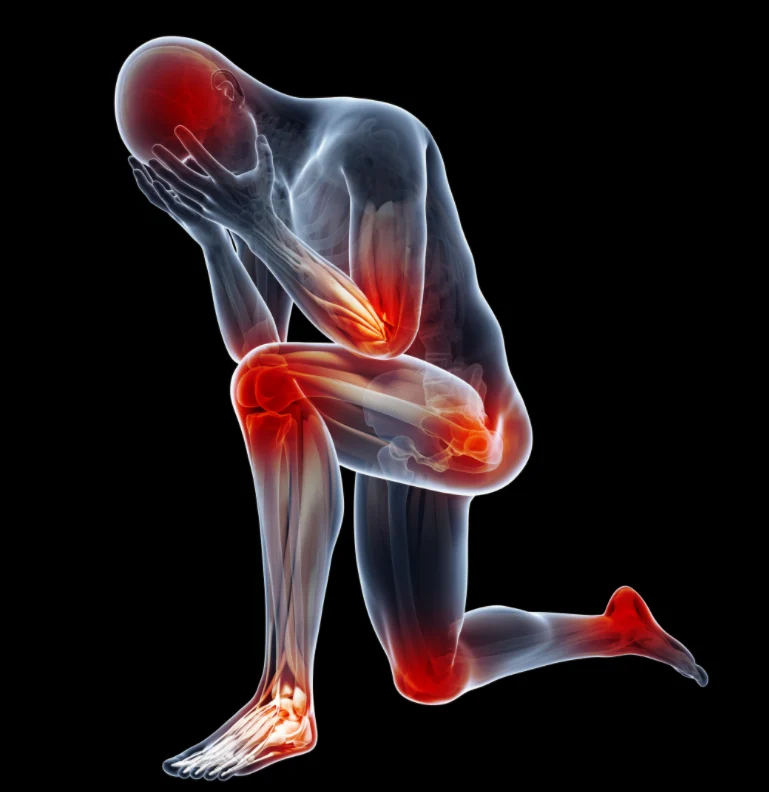
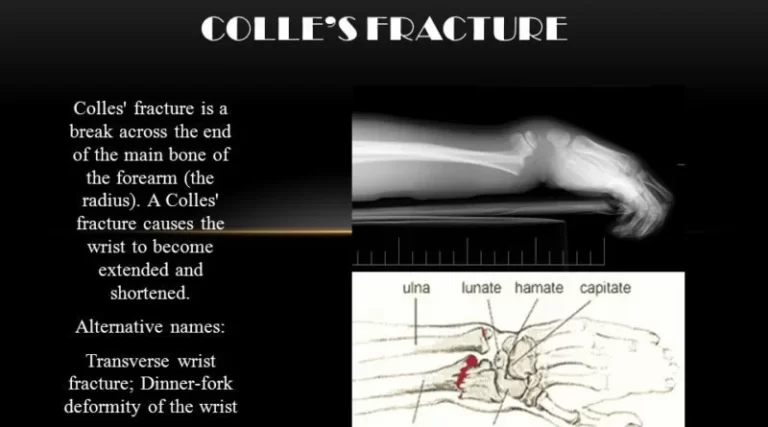
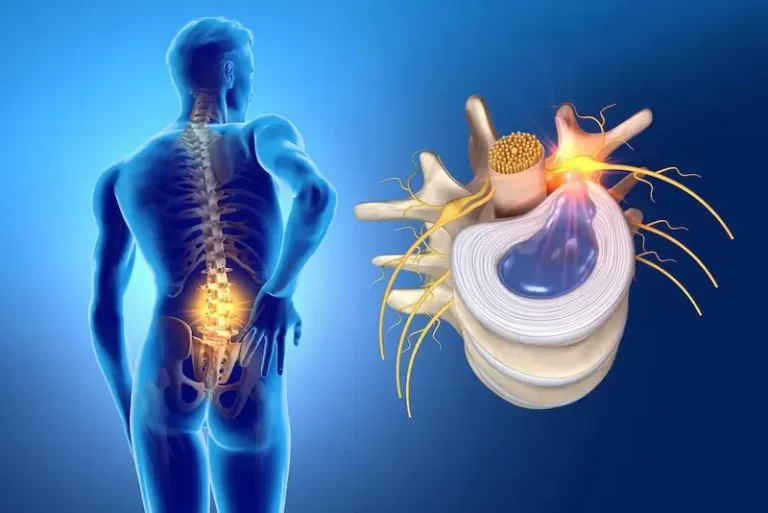


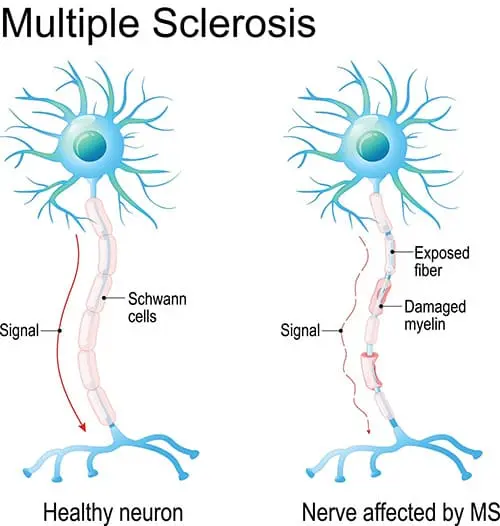
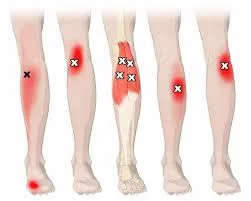
25 Comments